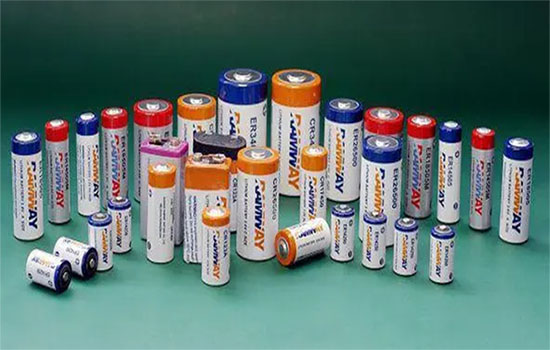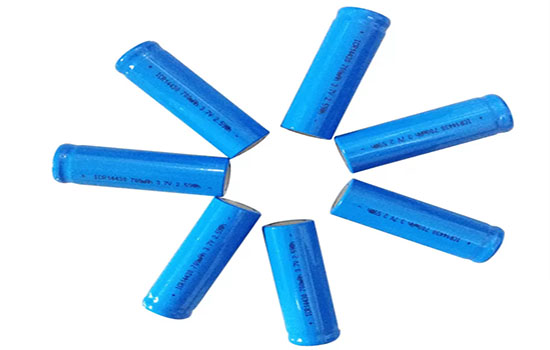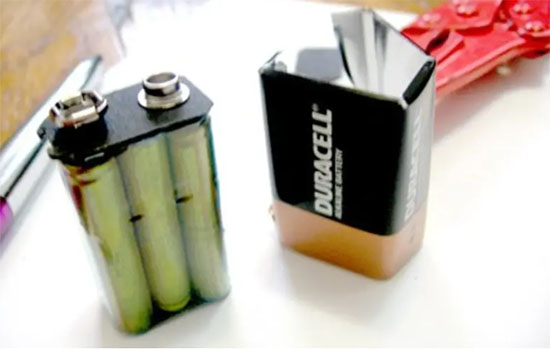Electricity is the blood of modern civilization, the use of electric energy is the sign of human entering modern society. As an energy conversion and storage device, the battery converts chemical energy into electric energy by reaction. Although the current is invisible, the real power it brings is being transformed into a stylish scientific and technological power, which is hidden in the mystery and magic of promoting social development and technological innovation.
Secondary lithium ion battery is a kind of rechargeable battery which uses graphite or other carbon materials as the negative electrode and transition metal compounds containing lithium as the positive electrode. It is usually referred to as lithium battery for short.

In 1979, Goodenough published the first patent for lithium cobaltate lithium-ion batteries.
In 1985, Akira Yoshino made the first secondary lithium-ion battery in the modern sense.
In 1991, SONY began mass production of commercial lithium-ion batteries.
In 1998, a large number of square lithium-ion batteries were put on the market, occupying a large share of the market.
Mass production of lithium-ion batteries began in China in 1999.
1) Classification by shape and package
2.1.1 Cylindrical lithium battery
Cylindrical lithium-ion batteries, the type name is generally 5 digits, the first two digits are the diameter of the battery, the middle two digits are the height of the battery, the last digit 0 represents the cylindrical, the unit is millimeter.

The more common cylindrical lithium battery models are: 18650, 16500, 21700, 26650, 46800 and so on.
Cylindrical lithium batteries are commonly used in consumer electronics, power tools, two-wheeled electric vehicles, energy storage products, electric vehicles, etc.
2.1.2 Square lithium battery
Square lithium battery usually refers to aluminum shell square lithium battery, widely used in consumer electronics, electric vehicles, energy storage products, exploration and mapping, medical equipment, portable testing equipment, etc.

2.1.3 Soft pack battery
Soft pack battery usually refers to the shell of the aluminum plastic composite film encapsulation of lithium battery. Due to its light weight, low die cost, high safety advantages, its market share is gradually expanding.
2.1.4 Special-shaped battery
The term refers to the irregular shape of lithium batteries, which are commonly used in some electronic products with special requirements, such as Bluetooth headsets, wearable devices, and ultra-thin mobile phones.
2) Classification by positive electrode material
Currently, there are mainly the following types of cathode materials for lithium-ion batteries:
Lithium cobaltate
Lithium iron phosphate
nickel-cobalt-manganese
Lithium manganate
2.2.1 Liquid lithium-ion battery 3. Sort by electrolyte
Liquid lithium-ion batteries use a liquid electrolyte, which is an organic solvent plus lithium salt.
2.2.2 Polymer lithium-ion batteries
Polymer lithium-ion batteries use a gelatinous polymer as an electrolyte, which can be either "dry" or "colloidal", but most currently use polymer colloidal electrolytes. The matrix of the polymer mainly consists of HFP-PVDF, PEO, PAN and PMMA.
2.2.3 Solid state lithium-ion batteries
Solid state lithium battery is a kind of lithium battery used in the operating temperature range of electrodes and electrolyte materials are solid, do not contain any liquid components, so the full name is "all solid electrolyte lithium battery".
1) Consumer goods
Mainly used in digital products, mobile phones, mobile power, notebook and other consumer electronic equipment. Commonly used are 18650 lithium battery, polymer lithium battery.
2) Industrial sector
Mainly used in medical electronics, power tools, drones, commercial robots, electric vehicles, photovoltaic energy storage, railway infrastructure, security and communication, exploration and mapping and other fields. Commonly used square lithium battery, polymer lithium battery, cylindrical lithium battery, etc.
3) Specialty areas
Mainly used in aerospace, naval ships, satellite navigation, high energy physics and other fields. Commonly used are ultra-low temperature lithium battery, high temperature lithium battery, lithium titanate battery, explosion-proof lithium battery.
1) Voltage
Nominal voltage
The potential difference between the positive and negative terminals of a lithium battery is called the nominal voltage of a lithium battery. The nominal voltage is determined by the electrode potential of the electrode material and the concentration of the internal electrolyte.
Open-circuit voltage
The terminal voltage of a lithium battery in the open state is called the open voltage. The open circuit voltage of a lithium battery is equal to the difference between the positive electrode potential and the negative electrode potential of a lithium battery.
Operating voltage
Operating voltage refers to the voltage displayed in the discharge process after the lithium battery is connected to the load, also known as discharge voltage. The operating voltage at the beginning of a lithium battery discharge is called the initial voltage.
2) Capacity
Lithium battery in a certain discharge conditions can release the power called lithium battery capacity, commonly used unit for ampere-hour, ampere-hour (Ah) or mAh.
The capacity of lithium battery is affected by the cathode material used, battery temperature, discharge rate, voltage and so on.
3) Internal resistance
The internal resistance of a lithium battery refers to the resistance encountered by the current passing through the inside of the lithium battery. The internal resistance will affect the voltage of the lithium battery.
4) Cycle life
The cycle life of a lithium battery is generally expressed by the number of times of use. A cycle represents a complete charge and discharge cycle of a lithium battery (i.e. the battery power of a lithium battery changes from empty charge to full, and then from full discharge to empty).
Note: Compared with lead-acid batteries, lithium batteries have better cycle characteristics and can maintain about 80% capacity after 500 cycles.
5) Discharge ratio
Discharge ratio refers to the size of the discharge current of lithium battery, which is generally expressed by C and expressed by the formula:
Discharge ratio = discharge current/rated capacity
Note: Because lithium batteries use organic solvent electrolytes, the conductivity is generally only a few hundredths of that of lead-acid or alkaline battery electrolytes. Therefore, lithium-ion batteries in high current discharge, there is no time to replenish Li+ from the electrolyte, will occur voltage drop.
6) Operating temperature
The operating temperature of a lithium battery refers to the environment that a lithium battery can adapt to and the temperature of the battery itself under the condition that it can maintain normal charging and discharging operation.
The discharge platform of lithium battery decreases at low temperature. At high temperature, the cycle performance of the battery will be affected, and the battery will have a trace expansion. Therefore, the battery is generally recommended to operate in the range of 0-40℃.

Lithium battery PACK mainly refers to the processed and assembled lithium batteries, which are mainly processed into products required by customers by combining battery cells, shells, and protection plates through battery PACK technology.
According to different application scenarios and different specifications, lithium batteries need to meet the quality and safety standards of different grades or countries, such as UL1642, IEC62133, UN38.3, etc. Some common safety test items are:
1) External short-circuit test
2) Abnormal charging test
3) Mandatory overcharge testing
4) Forced discharge test
5) Limited voltage test
6) The Crush Test
7) Vibration Test
8) Casting pressure release test
9) Burn or spray test
10) High temperature test
11) Low pressure test
Lithium battery transport includes air transport, water transport, land transport, the most commonly used is air transport, sea transport.
Lithium is a kind of metal especially prone to chemical reactions. If the packaging and transportation of lithium batteries are not handled properly, they are prone to combustion and explosion.
Packaging requirements for lithium batteries:
1. The package must be packed in accordance with the applicable packaging instructions and instructions in accordance with the UN specifications specified in the DGR Dangerous Goods Regulations, and the corresponding serial number must be fully displayed on the package.
2. Class 9 hazard labels must be affixed.
3. The dangerous goods Declaration form must be filled in and the corresponding dangerous bag certificate must be provided.
Transportation requirements for lithium batteries:
1. The battery shall pass UN 38.3 test and drop packing test at different heights.
2. The dangerous goods declaration documents provided shall be marked with UN number.
3. The battery shall be protected against short circuit, and in the same package shall be prevented from contact with conductive substances that can cause short circuit.
4. To avoid strong vibration in the handling process, the vertical and horizontal sides of the pallet are protected by Angle protection.
9. How to use lithium battery correctly
Storage of lithium batteries: The most important storage conditions for lithium batteries are temperature and humidity. It is recommended to store lithium batteries at a temperature of 25 ° C, pay attention to moisture and humidity, periodically recharge electricity, do not squeeze or collide, do not put them in fire or high temperature environment, and do not store them in a place with strong static electricity or a strong magnetic field.
Lithium battery charging and discharging -- do not overcharge, do not use inferior charger, do not blindly use non-original charger, do not charge and discharge in high temperature and humidity environment.
Contact: Jason Wang
Phone: 13580725992
E-mail: sales@aooser.com
Whatsapp:13580725992
Add: No.429 Guangming Road, Shenzhen City, Guangdong Province
We chat
